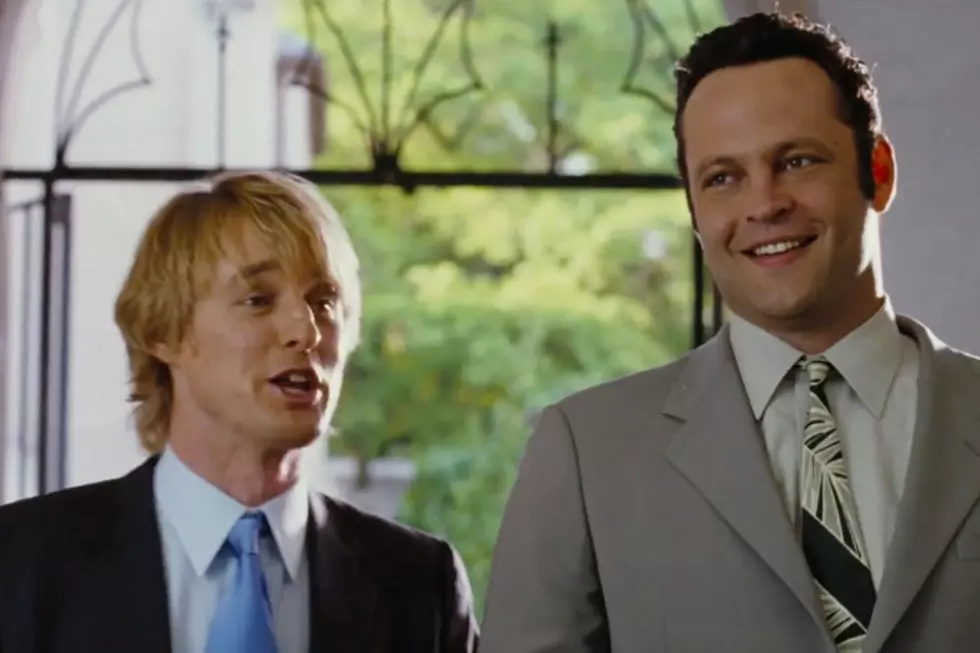
‘Brawl in Cell Block 99’ Review: Vince Vaughn Is a Lean, Mean, All-American Skull-Bashing Machine
The current cinematic trend toward “explainer culture” — the need to dissect art to discern its true meaning and the demand for directors to explain their creative intentions — is counterintuitive to the enjoyment of art. As David Lynch once said, “The film is the thing.” The movie is the conversation; the only explanation that really matters is your own. And yet, walking out of Brawl in Cell Block 99, it’s almost impossible to not wonder about writer and director S. Craig Zahler’s intentions. Is this a genuine exploitation film, or is it merely exploitative? And if it’s the former, what place do those films have and what purpose do they serve in 2017?
Vince Vaughn continues his surreal transformation into Vincent D’Onofrio with Brawl in Cell Block 99, the latest film from Bone Tomahawk director S. Craig Zahler. Your enjoyment of his follow-up likely hinges on a couple of things: An affinity for the transgressive brutality of schlocky exploitation classics and / or a conservative socio-political perspective. The first 30 minutes of the film play out like Michael Mann’s version of a blue collar family drama: Bradley Thomas (Vaughn) is a recovering alcoholic and former boxer struggling to make ends meet. But then he gets laid off from his job in an auto shop, and comes home to find his wife on her way out the door to cheat on him, and it’s enough emasculation to make a man snap and tear apart his wife’s car with his bare hands.
Without a job, Bradley goes back to working for an old drug dealer pal and makes enough money to build a life with his now-pregnant wife (Jennifer Carpenter). Despite the debased nature of his career, Bradley is still the kind of man who respects law enforcement enough to come to their aid when they get into a firefight with the Mexican dealers who just double-crossed him. By now, you have a pretty clear picture of Bradley (never “Brad”), a man so patriotic that he has two American flags in his home. He’s just a good ol’ blue collar, all-American man with a moral compass that can only be described as fully erect.
It’s around this point that Brawl in Cell Block 99 mutates into another film entirely. The drug boss Bradley screwed over wants his due, so he kidnaps Bradley’s wife and sends an emissary (played with delicious restraint by cult veteran Udo Kier) with an offer: Get himself transferred to the Red Leaf maximum security prison and kill one of the inmates, or a Korean abortionist will dismember his unborn child. (Yes, you read that correctly.)
A couple of bone crunches later, Bradley makes his way over to the comically medieval Red Leaf facility run by an eccentric Don Johnson and his Nazi-lite army of prison guards. From there, the film is an escalating series of brutal prison fights and caved skulls — Bradley appears to be as passionate about bashing heads in as MacGruber is about ripping throats.
The depiction of violence isn’t particularly troubling in our current cinematic landscape, but Zahler doesn’t recognize its utility in this story beyond shock and schlock value. At times, Brawl in Cell Block 99 feels like a sincere attempt to make an exploitation film for conservative blue collar white American men, but therein lies the problem. It’s a perspective that many liberal-minded viewers may struggle with, though it’s inarguably fascinating to inhabit a mindset that essentially feels alien for two hours. But the way Zahler uses the violent cinematic language of exploitation films creates a transgressive inverse: He’s emphasizing the indignities suffered by the average working class white man who, despite his best and most morally upright efforts, finds himself victimized by his own country — a country that treats immigrants and minorities better than its own (white) people.
And then there’s the laughably horrendous dialogue delivered by faces so straight it’s downright impressive. Lines like, “Last time I checked, the colors of the flag weren’t red, white and burrito.” This is the sort of dialogue you wouldn’t expect to hear anywhere in 2017 except for maybe a schlocky Nic Cage action flick, but at least those films have a certain level of self-awareness. Brawl in Cell Block 99 — which, by the way, never features an actual brawl — appears earnest in its loving embrace of conservative ideas, and reinforces the notion that blue collar white men are being marginalized by “foreigners.”
If Zahler is transgressing anything, it’s liberal notions of social justice and equality, or even basic decency. It’s possible to believe that the film’s delusional narrative is satirical in some way, or serves as a critique of Bradley and men like him, but this seems highly unlikely given the similar tone of Bone Tomahawk — another unapologetic film that revolves around white men killing people of color. Even Zahler’s apparent understanding of how and why the American prison system is broken is entirely off base. It seems that the film, like its protagonist, has misdirected its grievances at minorities when it should be pointing its finger at the wealthy one percent.
Yet despite all of that, Brawl in Cell Block 99 is occasionally, bizarrely entertaining in its own demented way. It has moments of humor, and some of the violence, though blunt and incredibly graphic, is engaging on a visceral level. It’s unclear if Zahler wanted to make a sincere exploitation film, or if he made a politically motivated movie that validates a large portion of the American population — many of whom will inevitably find Brawl in Cell Block 99 to be violently cathartic. Once the lights go down and the credits begin to roll, it’s out of Zahler’s hands; it’s up to the viewer to make sense of what they’re seeing.
The film is the thing.
More From ScreenCrush









